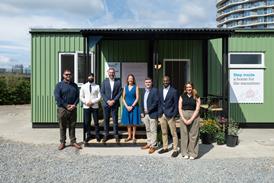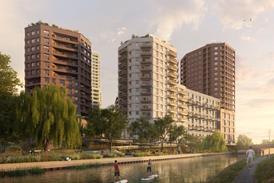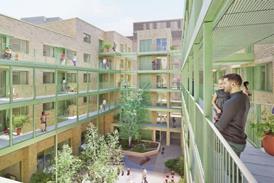Grimshaw, Hopkins Architects, NBBJ and Sheppard Robson are competing to design a world-class, £500 million “super-laboratory” in central London.
The practices are on an 11-strong shortlist for the UK Centre for Medical Research & Innovation to be built on former British Library land at King’s Cross.
Other firms vying for the prestigious job include RMJM, HOK and US firm CUH2A. Hopkins Architects will be working with Glasgow-based BMJ on its bid.
The centre, to be completed by the end of 2013, will have state-of-the-art facilities and infrastructure, and access to teaching and specialist hospitals.
The practices were among 77 who responded to an Ojeu notice issued by the Medical Research Council earlier this year.
The site had also been proposed as a potential location for new housing, but last week prime minister Gordon Brown announced the government’s intention to sell the land to the laboratory project, which is a joint venture by the MRC, Cancer Research UK, the Wellcome Trust and University College London.
Brown said: “We strongly support plans to create Europe’s leading centre for medical research in the heart of London. It will maintain Britain’s position at the forefront of global medical research, strengthen the UK economy and, through its NHS links, has huge potential to change patients’ lives.”
Rolfe Kentish, partner of Long & Kentish, which designed the nearby British Library Centre for Conservation, said: “It could be quite an exciting project. It’s a huge site, and I’d be surprised if only one use was put to it.”
Plans for the site, currently owned by the Department for Culture, Media & Sport, are not thought to include any housing — a decision that has attracted criticism from local residents’ groups.
The MRC refused to reveal the full shortlist.
lab notes
Lab will “compete and collaborate” with Harvard’s Allston Initiative, Singapore’s Biopolis and China’s Shanghai Science-based Industrial Park.
New home for technology arms of Cancer Research UK and the MRC
Working to produce new treatments which the NHS would then trial and adopt
Up to 1,500 staff to work at the centre











No comments yet